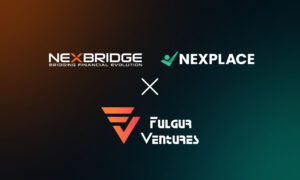Bitcoin is again in the news recently, but for completely different reasons than you might expect. The latest trend in the market is Bitcoin’s BRC-20 token standard. Made popular by the recent Pepe memecoin, the BRC-20 seems to be the new destination for the crypto community.
Only 2 Months Old and Leading
BRC-20 standard token was created in March this year in a crypto analysis only known as Domo. The reason was explained to be able to give the Bitcoin network the ability to mint fungible tokens.
If you have been reading Bitcoin news, you already know that the chain does not have the programming to do so.
That is why in less than 2 months, BRC-20 tokens have taken the Bitcoin world by storm and every Bitcoin technology news platform seems to be talking about it. That is not without reason too. The market cap for BRC-20 tokens is around $1-20 million right now, showing a 6x increase in the past few days only.
The increased interest is to such a high level that BRC-20 standard token transactions briefly overtook BTC’s, peaking at 366,000 transactions on May 1st. That represented over 50% of all BTC transactions that took place that day.
While the frenzy has seen the memecoin Pepe rise in value, so has the transaction fee. How much? Since the launch of Pepe, the Bitcoin network has generated almost 110 BTC in fee – all going in the pockets of miners.
BRC-20, The new Standard
The “Bitcoin Request for Comment” number 20 is a Bitcoin technology standard token, not much unlike its more popular counterparts, Ethereum’s ERC-20, Binance Smart Chain’s BEP-20 and even Tron’s TRC-20.
What it essentially does is that it gives the Bitcoin network the ability to mint tokens, just like other second generation blockchain networks can.
But that is the only similarity BRC-20 has with others. In other networks, the standards allow for the creation of a completely new fungible token that can piggyback on the mainnet. With the BRC standard, all that is done is that an extra set of data is appended to Satoshis (the smallest unit of a Bitcoin), allowing them to be traceable and therefore, indefinably, different from regular Satoshis.
Inscribing Ordinals on Bitcoin Network
Another Bitcoin tech news that has recently surfaced is the NFT-like use of Satoshis through Bitcoin Ordinals.
Ordinals are basically a way to give each Satoshi a serial number, trackable across different transactions. The process of attaching the extra data is called inscription.
The inscription means that the relevant Satoshis can be given unique data, making them completely different and non-fungible . In other words, they become NFTs on the Bitcoin network.
However, this is as far as the similarities go. On other chains, NFTs are completely different tokens, with their underlying assets (images, songs or any kind of data) being stored elsewhere. The NFTs are also capable of interacting with smart contracts.
On the other hand, all Ordinals are on chain and the asset they represent is basically the unique data and serial written or inscribed on them.
What it Means for Tokens on Bitcoin Network
With such big Bitcoin tech news, there has been a rise in interest on using Ordinals instead of regular NFTs due to some advantages over the former.
As Satoshis and therefore, BTC, these fungible and non-fungible tokens have all of the characteristics and properties of regular BTC. This means all of the simplicity, security, immutability and safety.
In that sense, Ordinals based NFTs are more secure than any other alternate ones in the industry. But the lack of smart contract technology and the inability to store complex assets to represent means there are limitations to its use.
But that hasn’t stopped the popularity – at least not right now. With the increased use of Ordinals and BRC-20 tokens, there is a fight to have transactions noted down on-chain. The Bitcoin network has a block size of just 1MB and is able to store roughly 2,000 transactions in a block.
Given that it takes an average 10 minutes for a block to be produced, the large volume of transactions remain pending – unless you are willing to pay extra to cut the line and get ahead. That means transaction fees average out on the higher side, making it difficult for even regular transactions.



































